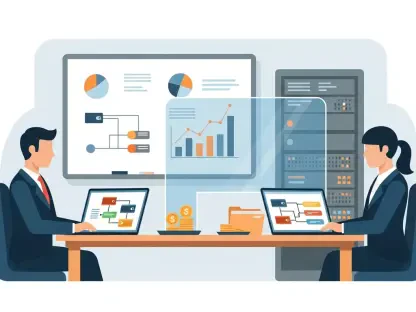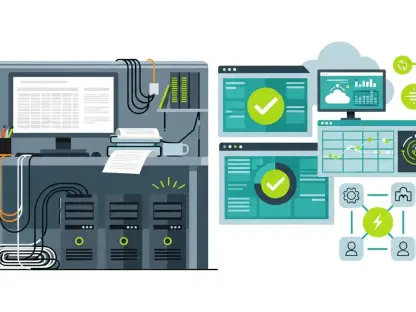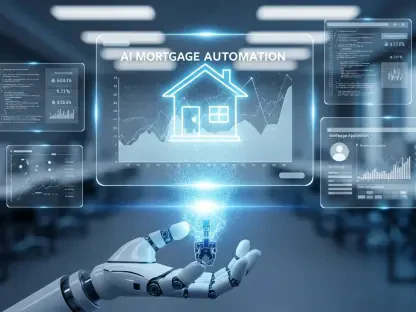Peer-to-peer (P2P) networks have undergone significant transformations since their debut in the late 1990s. Initially created for digital file-sharing, these networks have grown to play a pivotal role in sectors such as disaster response, finance, healthcare, education, and energy. This article examines the profound impact of P2P networks on resource sharing, community resilience, financial access, and beyond.
The Origins and Evolution of P2P Networks
P2P networks emerged as a revolutionary way for users to exchange digital files directly, bypassing centralized servers. Napster, introduced in 1999, marked a significant milestone in the development of this technology. Despite encountering legal challenges, Napster’s pioneering model laid the groundwork for the creation of other decentralized systems like BitTorrent. As P2P technology evolved, it became a foundational element in a variety of industries, influencing everything from financial transactions and resource sharing to online communication tools like Skype.
Today, P2P networks are deeply integrated into the fabric of contemporary infrastructure. They provide the underpinnings for decentralized finance (DeFi), distributed computing, and peer-to-peer communication platforms. These networks have redefined how digital interactions occur, eliminating the need for intermediaries and allowing for more autonomous and efficient exchanges. The evolution of P2P technology signifies a shift towards more democratized control over data and resources, empowering individuals and communities to directly participate in various online activities.
The Growing Trend of Decentralization
In an age where trust in traditional centralized institutions is diminishing, P2P networks symbolize a broader movement towards decentralization. These systems promise greater transparency, autonomy, and efficiency, enabling direct exchanges of resources and services. The rise of cryptocurrencies, such as Bitcoin, is a testament to the potential of P2P networks in fostering innovation and resilience. These decentralized networks facilitate secure, peer-to-peer transactions without the need for central authorities, thereby reducing the risk of fraud and enhancing the overall security of financial dealings.
As decentralized technologies gain traction, they are poised to drive significant changes across multiple industries. P2P networks foster collaborative projects and personalized financial services, ultimately promoting a more resilient and adaptive ecosystem. This trend towards decentralization is not merely about rejecting traditional systems but about leveraging technology to create more inclusive and accessible solutions. The shift to decentralized networks is indicative of a broader desire for greater control and security in a world where centralized entities are increasingly viewed with skepticism.
Enhancing Community Resilience Through Resource Sharing
Recent research published in “Nature Cities” has demonstrated the immense potential of P2P resource sharing in enhancing community resilience, especially in disaster scenarios. The study focused on urban communities in Seattle, Washington, exploring the effectiveness of local P2P resource sharing during emergencies. The findings revealed that such sharing practices could significantly mitigate the adverse effects of disasters, reducing resilience loss by 13.4% to 100% during a five-day isolation scenario.
These results highlight the critical role that local networks play in disaster response. By leveraging social ties and community resources, P2P sharing creates a more adaptive and resilient response system. Traditional top-down approaches often fail to effectively mobilize local assets, while P2P networks utilize these overlooked resources to build stronger, more interconnected communities. The framework proposed in this research could be applied to other urban areas, potentially serving as an effective strategy for enhancing disaster resilience nationwide.
Challenging Traditional Financial Systems with P2P Lending
P2P lending is revolutionizing the traditional banking industry by providing a direct connection between borrowers and lenders through digital platforms. This model eliminates intermediaries, leading to faster approval processes, greater flexibility, and increased accessibility compared to conventional loans. P2P lending platforms streamline the borrowing process, often providing quick access to funds within 24 hours. This speed and flexibility make P2P lending especially attractive to individuals and businesses in need of immediate financial assistance.
This alternative lending model is gaining popularity as it meets the diverse financial needs of borrowers, from personal expenses to business investments. While P2P lending shares similarities with traditional loans in assessing creditworthiness, it is generally more lenient and efficient. Investors in P2P platforms benefit from a more diversified portfolio, while borrowers enjoy lower interest rates and more favorable terms. This democratization of finance challenges traditional banking norms and opens up new opportunities for financial inclusion.
Broader Applications of P2P Networks
Beyond the realms of finance and disaster resilience, P2P networks are making remarkable strides in healthcare, education, and energy sectors. In healthcare, P2P platforms enable patients to share their medical data directly with researchers, accelerating advancements in personalized medicine. This direct exchange of information fosters greater collaboration between patients and healthcare professionals, leading to more targeted and effective treatments.
In education, P2P networks facilitate connections between students and educators across geographical boundaries. These platforms break down barriers to knowledge sharing, providing access to high-quality educational materials and fostering collaborative learning environments. For instance, a student in a remote village can receive tutoring from a teacher in another country or engage in joint projects with peers from around the world.
The energy sector also benefits from P2P systems, as households can exchange surplus solar energy, promoting sustainability and reducing dependence on centralized power grids. This decentralized approach to energy distribution enhances the resilience of local communities and encourages the adoption of renewable energy sources. These diverse applications of P2P networks underscore their potential to decentralize control and foster direct collaboration across various industries.
Democratizing Education Through P2P Platforms
One of the most impactful applications of P2P networks is in the field of education. Online P2P platforms are transforming how knowledge is shared, making education more accessible and inclusive. These platforms enable students and educators to collaborate regardless of geographical location, socio-economic background, or institutional barriers. High-quality educational materials, ranging from textbooks to video lectures, are often available for free or at a low cost, empowering underserved communities with valuable learning resources.
Through collaborative learning and problem-solving, P2P education platforms create global knowledge networks that transcend traditional classroom boundaries. Students can engage with peers and educators from different parts of the world, gaining diverse perspectives and enhancing their learning experiences. This democratization of education fosters a more equitable and inclusive system where everyone, regardless of their circumstances, has the opportunity to learn and grow.
Expansive Networking and the Future of P2P Systems
P2P networks are redefining how resources are shared, how communities respond to disasters, and how financial services are delivered. Their fundamental strength lies in creating direct, decentralized connections between users, akin to peer groups in real-world interactions. From enhancing community resilience to challenging established financial models, P2P systems open up new possibilities and drive innovation across multiple sectors. As technology continues to advance, these networks are expected to play an increasingly vital role in shaping the future of society.
The continued evolution of P2P technology promises expansive opportunities for connectivity, collaboration, and personal and communal growth. By fostering direct interactions and minimizing the need for intermediaries, P2P networks are creating more efficient, resilient, and inclusive systems. As these networks grow and adapt, they will likely become even more integral to the functioning of various industries, paving the way for a more connected and empowered world.
Summary of P2P Networks’ Transformative Impact
Peer-to-peer (P2P) networks have evolved massively since their introduction in the late ’90s. Initially developed for digital file-sharing, such as music and videos, these networks have expanded their influence into various critical sectors. Today, P2P networks are fundamental in areas like disaster response, providing reliable communication and coordination during emergencies. They have revolutionized the finance sector by enabling peer-to-peer lending and decentralized financial transactions, allowing broader financial access.
In healthcare, P2P networks facilitate secure medical data sharing and telemedicine solutions, improving patient care and service delivery. In education, these networks enhance resource distribution, enabling collaborative learning and information exchange on a global scale. Energy systems also benefit from P2P networks by promoting decentralized energy management and sharing, contributing to more efficient and resilient grids.
This transformation underscores the broad impact of P2P networks on improving resource sharing, boosting community resilience, and enhancing financial accessibility, among other significant contributions.









